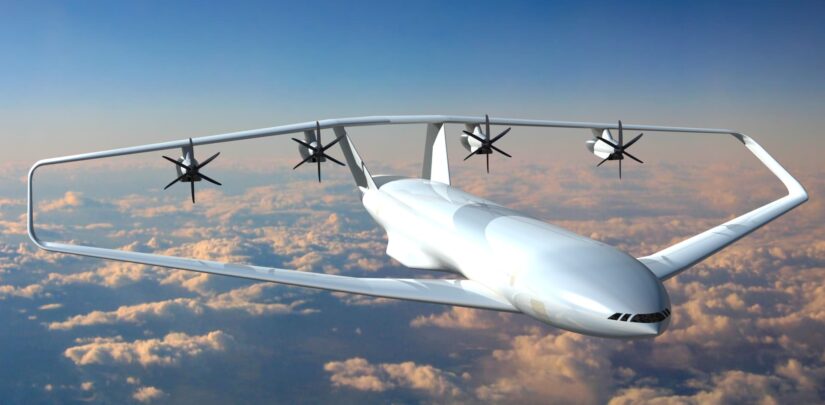Aviation is not only technology and engineering but also a source of inspiration for many creative fields. The sky, open space, and flight as symbols of freedom and striving for something new actively penetrate contemporary art and design. In Portugal, a country with a rich maritime and aviation history, this theme takes on special significance: artists and designers turn to aviation as a metaphor embodying the overcoming of boundaries and the search for new forms of expression. The lightness and swiftness of flight are reflected in dynamic lines, smooth shapes, and innovative solutions that change the usual perception of art.
Today, art and technology are closely intertwined, creating unique forms of visual perception. Visual works inspired by aviation often use aerodynamic silhouettes, elements from aircraft, and the atmosphere of altitude, evoking in the viewer a sense of flight. Beyond traditional paintings and sculptures, this influence is noticeable in contemporary interior and furniture design, where light, soaring structures reminiscent of wings or aircraft components are used. Such integration of forms and ideas helps create new spaces filled with air and light, which corresponds to the spirit of the times and the search for lightness in the urban environment.
The Symbolism of Flight in Art and Design Projects
Flight is a universal symbol of freedom, overcoming obstacles, and inspiration. In art, it has long served as a metaphor for spiritual and intellectual ascent. In contemporary design, this is reflected in the pursuit of minimalism and functionality, where not only aesthetics matter but also the feeling of lightness, movement, and openness. In Portugal, where air routes have connected the country with the world, designers actively use images of wings and aerodynamic forms, combining them with local color and traditions. For example, in architecture, new buildings often resemble soaring structures, and their facades repeat the smooth lines of a wing.
Equally interesting is the use of aviation materials in creativity. Composites, aluminum alloys, lightweight fabrics traditionally used in aviation increasingly find their place in works of art and furniture. This is not only practical but also symbolic: the combination of strength and lightness, technology and aesthetics opens new horizons for creativity. Visual effects of transparency and light, achieved through modern materials, enhance the sensation of airiness and flight, setting new standards for spatial perception.
Technology and Digital Art: A Look into the Future
The development of technology and digital platforms opens even more opportunities for inspiration from aviation. Digital art actively uses 3D modeling and virtual reality, allowing viewers to immerse themselves in the world of flight and explore the airspace interactively. Portuguese artists and studios increasingly turn to these tools, creating projects where art, science, and technology intersect. These works trace the dynamics of air movement, the play of light and shadow, as well as elements reminiscent of airplane and helicopter structures.
Online entertainment, including Casinos e Casas de Apostas Online, also reflects this trend. Modern gaming interfaces and animations often draw inspiration from aviation and space themes, creating an atmosphere of speed, adrenaline, and freedom. This approach enhances player engagement, allowing them to experience emotions similar to the sensation of flight. Thus, aviation not only influences traditional art and design but also becomes part of digital culture, uniting entertainment technology and creative essence.
Aviation as a Bridge between Culture and Innovation
Portugal occupies a unique place on the aviation map, serving as a connecting link between Europe, Africa, and America. This leaves an imprint on the country’s cultural space, where aviation is perceived as a symbol of progress and openness. Artists and designers use aviation imagery not only to create aesthetics but also to convey the idea of global unity and interconnectedness. Wings and flights become a metaphor for communication and exchange, which is especially important in the era of globalization.
Moreover, aviation stimulates innovations in sustainable development and eco-design. Modern projects often include elements aimed at minimizing environmental impact, inspired by the evolution of aircraft manufacturing where lighter and more eco-friendly materials are used. This is reflected in urban design and public spaces, creating harmony between nature, technology, and art. Such an approach aligns with global trends and attracts the attention of the Portuguese public to issues of ecology and innovation.
Conclusion: Flight as a Source of Inspiration
Aviation in contemporary art and design is not just a theme or motif; it is a whole philosophy embodying the desire for freedom, development, and overcoming boundaries. In Portugal, where the history of flight is closely intertwined with culture and traditions, this influence gains special depth and expressiveness. From traditional art forms to digital technologies and online entertainment, aviation sets a new vector for the development of creativity and innovation.
Flight continues — both in the sky and in the world of art — opening new horizons and opportunities for self-expression. This inspiring symbol helps us not only to look upward but also to strive for better, for new heights and discoveries, reflecting the spirit of modern society, where art and technology go hand in hand.
